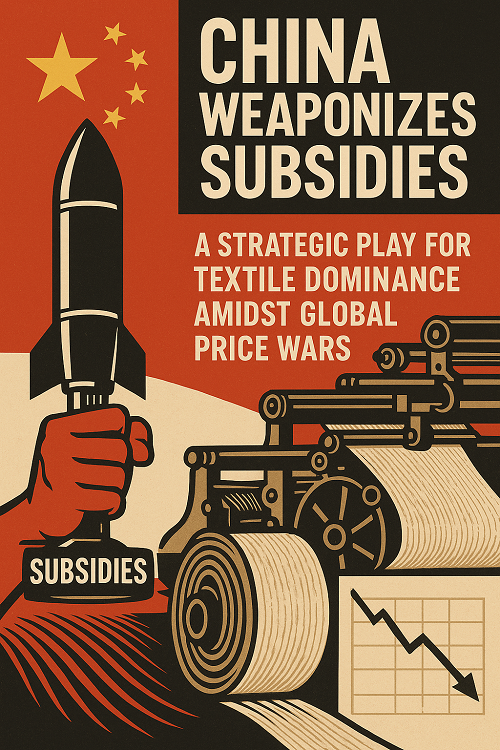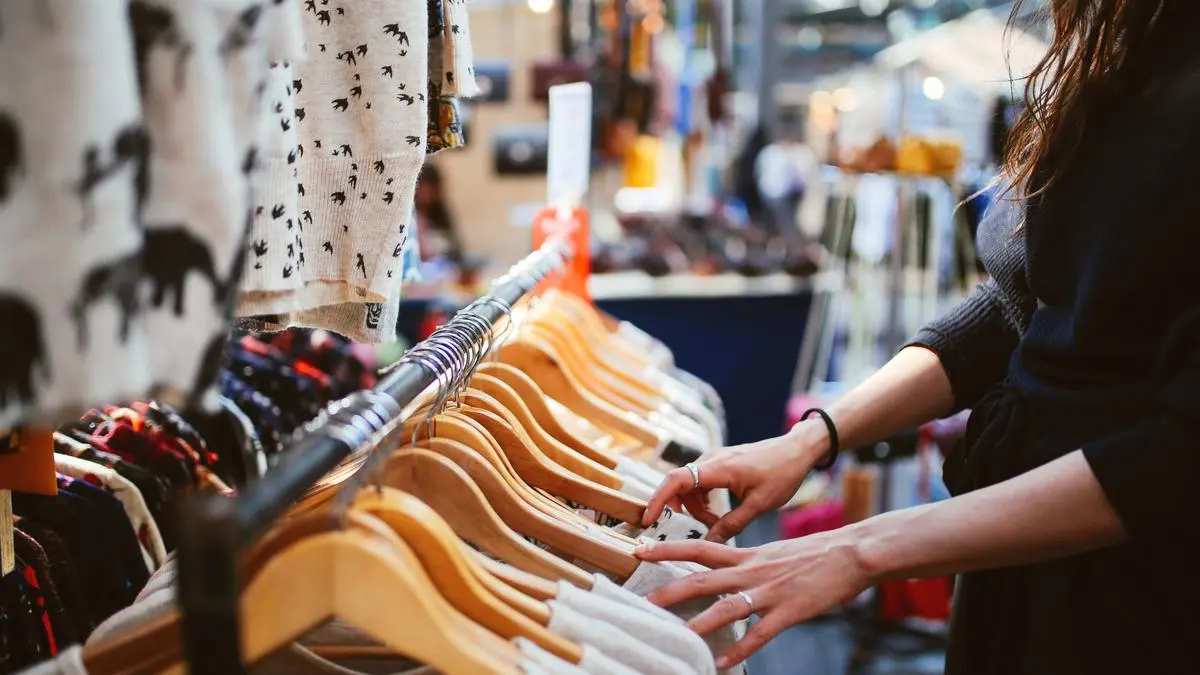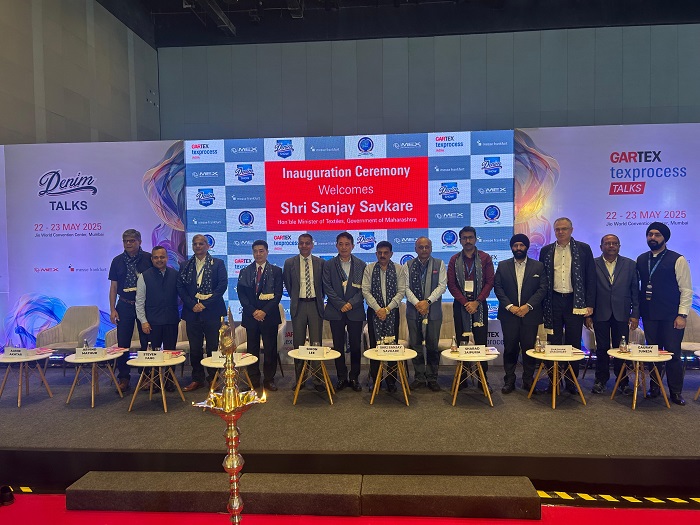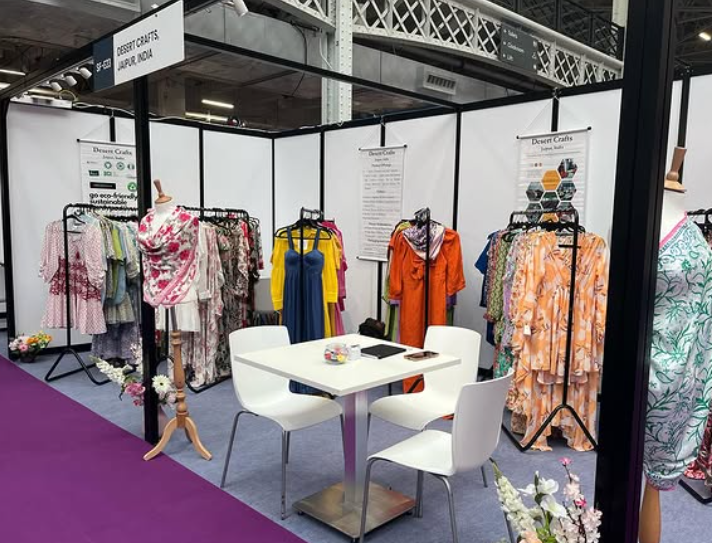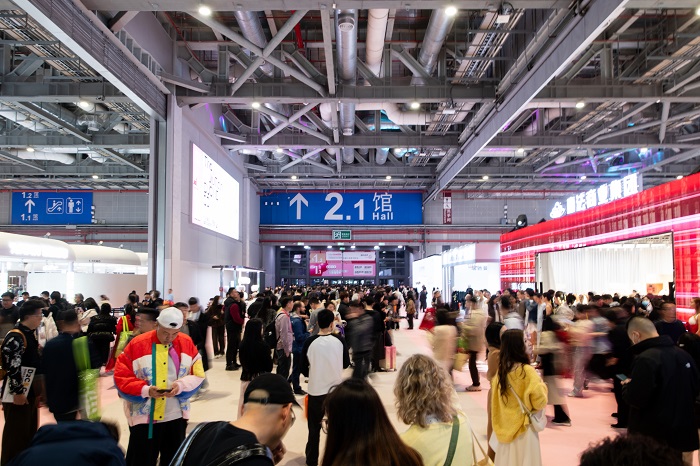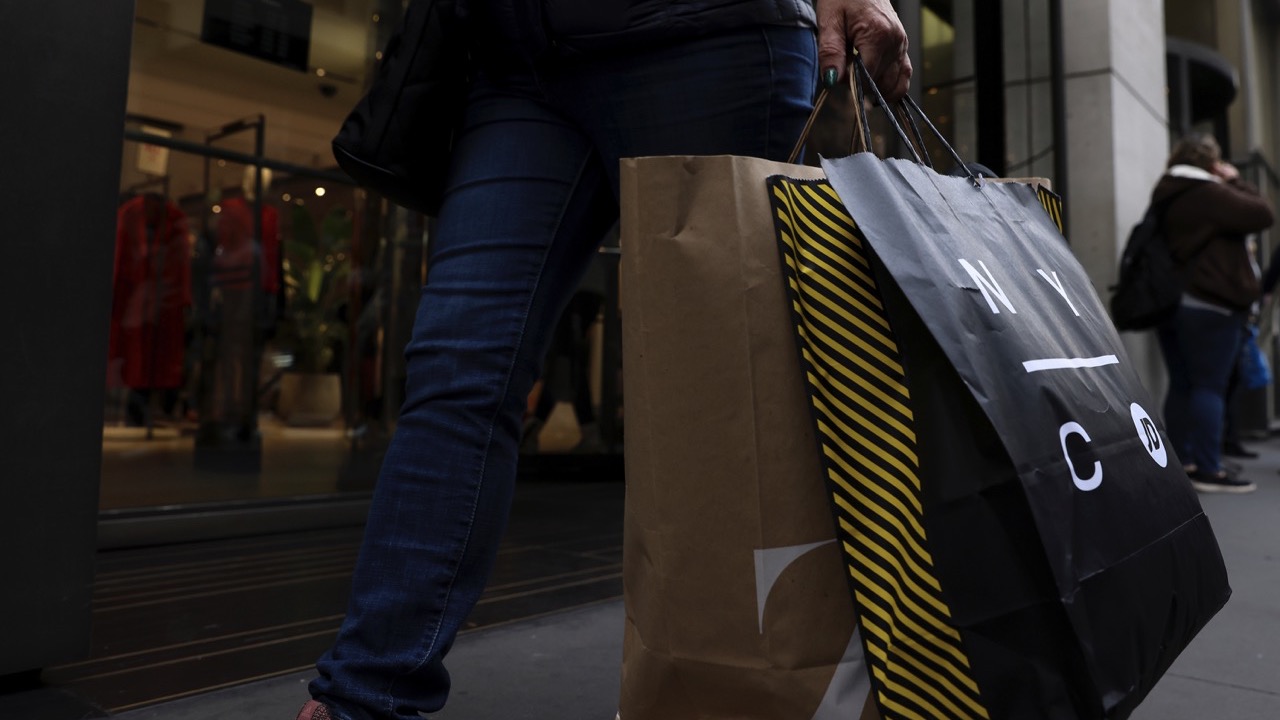Eurecat x Canmartex to develop predictive quality control systems for knitwear textile manufacturing
Aracne's system uses photonics, the Internet of Things, and artificial intelligence to predict potential manufacturing defects before the fabric is made.
This can help to reduce production defects by more than 50%, foster the circular economy, and improve the sustainability of the textile industry.
The company plans to release its first product in the second half of 2023 and expects to generate €6 million in sales by 2025.
Aracne's technology has been nominated for several awards, including the Innovation in Sustainability Award at the most recent ITMA trade fair.
The company is based in Argentona, Spain, and draws on a number of patents for technologies which identify and show defects.
Each of these technologies can be purchased as a module, which means that manufacturers can tailor the solution to their knitting machines.
Overall, Aracne is a promising new company with the potential to revolutionize the way that knitwear textile manufacturing is done.

The fact that one country’s loss is another one’s gain is coming true for India’s top knitwear hub Tirupur. Its slowly losing space due to the progress made by Bangladesh knitted fabrics manufacturing segment. The Free Trade Agreement (FTA) between India and Bangladesh is negatively affecting India’s textile exports and its market share within the domestic industry. Customs exemption on Bangladesh fabrics has made them far cheaper and resulted in increased imports into India’s mid-market segment. This has led to demand for the more expensive high-tech Tirupur products going down.
By importing cost-effective raw materials from China, Bangladesh is now exporting high-tech finished apparels to the EU and US markets where they are exempt from duties due to Bangladesh’s status as a least-developed country. Also, the cost-effectiveness and durability of man-made fibres in the apparel segment has added to the downfall of the knitwear segment that Tirupur is well-known for.
Moreover, growing import of dyed knitted fabrics, despite import duty, is a matter of concern. As Prabhu Dhamodharan, Convenor of Coimbatore-based Indian Texpreneurs Federation (ITF) points out, dyed knitted fabrics are used to make all types of garments. During the first five months of the current fiscal, India imported knitted fabrics worth Rs 2,270 crore, mostly from China.
The influx of dyed knitted fabrics directly impacts various sub-sectors, including spinning, knitting, and processing.
Tirupur manufactures around Rs 35,000 crore worth of knitwear apparels like T-shirts, innerwear, women’s leggings and shorts for exports and Rs 20,000 crore worth products for the domestic market.
Rapid decrease in Tirupur’s global exports, domestic markets
The Tirupur Exporters Association highlights, import of knitted fabric from Bangladesh have risen to Rs 2,489 crore as compared to Rs 1,576 crore in the previous fiscal 2021-22. While it is estimated the value of Indian exports is around $16.5 billion, Bangladesh has already crossed this figure with exports over $44 billion, making it necessary for the Tirupur knitwear industry to buck up with stiff competitive.
Although it seems that Tirupur’s export share increased during the past two years in comparison to clothes coming from other Indian garment centers. However, the dollar share in export of clothing has decreased, since the apparent increase in export is in reality more due to the rupee’s devaluation rather than volume increase. In reality, Tirupur exported fewer clothing in 2022–23.
Exports have decreased consistently from Tirupur when measured in dollars from August 2022 for the following seven months, with exports falling the most in February-March 2023 by around Rs 1,100 crore less than the same months in 2022. Also, there was a sharp decline in shipments in October 2022 worth Rs 2,164 which was a sharp drop from Rs 3,290 crores in October 2021.
Popularity of man-made fibres affecting business
Orders for knitted fabrics from Tirupur are also dropping due to competition from cheaper and durable man-made fibers that are flooding the fast fashion segment. Export orders from mills producing man-made fibers in Surat and other places in Gujarat is affecting Tirupur’s business. Other leading Asian apparel exporting countries such as Vietnam, Bangladesh are also facing lower order volumes but somehow doing better than India due to their lower labor costs, lower input costs, and duty exemptions in trade practices.
Although the Tirupur cluster has around 30,000 units including ancillary ones, most of them are not being used to capacity due to slow global demand. Currently, the bigger mills have some bulk global orders but the medium and smaller units are suffering with fewer orders. International export orders have reduced by 40–50 per cent from last year as most companies have not placed big orders for the upcoming Christmas season. Tirupur manufacturers will now have to wait it out for 2024 spring-summer orders which are placed by the end of this year, meaning profits will not come in for a long time.
The downturn in important apparel markets of the US and EU has affected the entire global trade and knitwear industry remains apprehensive that the worst is yet to come.
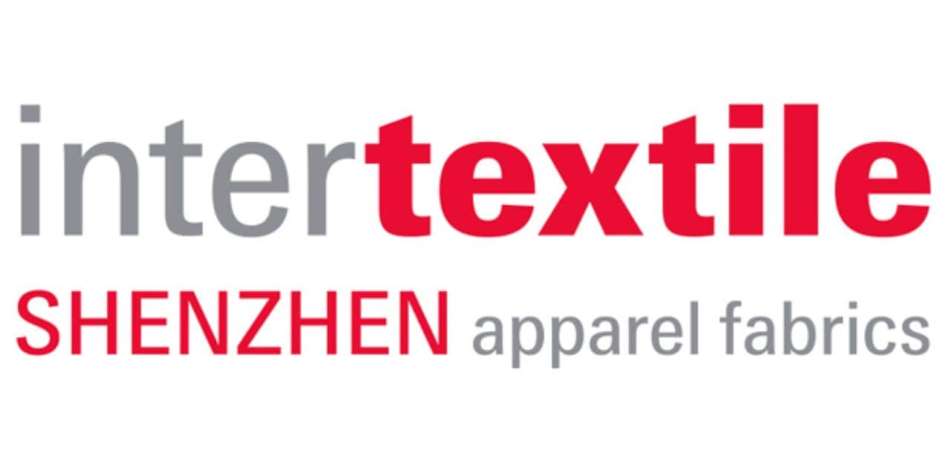
Guangdong, a cornerstone of China's textile manufacturing sector, particularly Shenzhen, is gearing up to take center stage at the Intertextile Shenzhen Apparel Fabrics event, which is set to be held from November 6 to 8, 2023. This annual event has a rich history of bringing together various players from the apparel value chain, ranging from wholesale markets, fabric producers, clothing processing plants, and fashion enterprises, such as Shenzhen's renowned Dalang Fashion Town.
This year, the organizers anticipate a substantial turnout of exhibitors and visitors from China and beyond. Messe Frankfurt HK Ltd's General Manager, Ms. Wilmet Shea, highlights the wide variety of domestic and foreign textiles and clothing accessories on display across all four halls. She emphasizes the return of the International Hall of the Japan and Korea Pavilions, offering high-traffic areas for suppliers looking to expand their presence in South China.
The Japan Pavilion will showcase accessories, pattern designs, and high-quality cotton and man-made fabrics for various fashion segments. Meanwhile, the Korea Pavilion will display a diverse array of fabrics, including polyester and rayon jacquard double knitting and recycled and woven materials.
Additionally, exhibitors from other countries will present products ranging from functional fibers to denim fabrics. Notable exhibitors include Bossa from Turkey, Henglun Textile from Vietnam, and PT WinnerSumbiri Knitting Factory from Indonesia.
Beyond the array of sourcing options, the event will feature a comprehensive fringe program offering insights into fabric trends and sustainability. Experts will lead discussions and seminars, with topics such as Fabrics China Trend A/W 24-25 forum and Empowering Sustainability and Circularity through Innovation.
This event, held concurrently with Yarn Expo Shenzhen, DPARK (Fashion Design), and PH Value, is organized by Messe Frankfurt (HK) Ltd, Messe Frankfurt (Shenzhen) Co Ltd, the Sub-Council of Textile Industry, CCPIT, and the China Textile Information Center. After a challenging period due to the pandemic, the textile industry is poised to regain momentum, with the Intertextile Shenzhen Apparel Fabrics event serving as a crucial platform for industry players to reconnect and showcase their latest offerings.
Connect with key buyers and decision-makers from the Indian subcontinent's mother and children sector.
CBME India 2024, the 8th edition of the prestigious trade show, offers an unparalleled opportunity to connect with key buyers and decision-makers from the Indian subcontinent's mother and children sector.
Forge alliances with leading Indian and international buyers.
With 150 influential exhibitors, 8 country pavilions, over 6000 trade visitors, and 200 top hosted buyers, CBME India 2024 is the perfect platform to showcase your flagship products and solutions to a captive audience.
The revision of the Textile Labelling Regulation (TLR) seeks to bring about significant changes aimed at standardising practices across the EU. This includes standardising fibre composition testing methods, rules on leather, and sizing standards, as well as shifting from traditional physical labels to digital ones. The revision is also expected to refine the fibre classification process, making it more transparent and efficient.
Challenges: One anticipated challenge is the potential transition from the current GINETEX symbols to a new EU standardised code for Product Care Information. This shift could lead to misalignments with widely accepted international standards. Additionally, there is a debate on whether the revision should strictly address material composition or embrace a wider spectrum by incorporating expansive sustainability metrics.
What's next: The Commission has planned to initiate the revision in the 4th quarter of 2023. Brands will need to implement more comprehensive and standardised labelling practices to ensure that consumers have access to accurate information about the composition and origin of textile products.
The 21st edition of MarediModa, the premier trade show for the beachwear, lingerie, and athleisure sectors, will take place from November 7 to 9 at the Palais des Festivals in Cannes. This year's event promises to be bigger and better than ever, with a growth in the number of exhibitors, product offerings, and the outsourcing area, along with a busier schedule of events.
MarediModa's tried-and-true format provides visitors with access to every aspect of the supply chain, from superior European fabrics and accessories to quality outsourcing, design studios, labeling, and packaging.
Emphasis on Traceability, Outsourcing, and Sustainability
MarediModa's President, Claudio Taiana, emphasizes the significance of their commitment to traceability, which has safeguarded the brand and the companies that present their collections. The event maintains its reputation for showcasing the premium segment of the industry.
MarediModa also collaborates with The LYCRA Company to showcase the European premiere of two new fibers, LYCRA® ADAPTIV BLACK and LYCRA® ADAPTIV XTRA LIFE. These fibers combine the benefits of the original LYCRA fiber with additional branded technologies for an enhanced wear experience, with a focus on sustainability.
Trends 2025 and Beyond
The Summer 2025 trends, presented by David Shah and The View Team, are marked by the keyword "Boost." Five dynamic and creative themes will shape the upcoming collections: Exuberant, Conscious, At ease, Magical, and Transformed. Visitors will have exclusive access to the TREND BOOK 2025 and trend presentation video.
The Southern Gujarat Chamber of Commerce and Industry (SGCCI) hosted the Surat Start-Up Summit 2023 from October 27th to 29th at the Surat International Exhibition and Convention Centre. The three-day event aimed to strengthen the start-up ecosystem in Surat and inspire entrepreneurs.
Over 55 start-ups from Surat, Ahmedabad, and Vadodara showcased their creative ideas at the summit. The event also featured a roadshow for the Gujarat Vibrant Start-up Summit, scheduled for December 2023.
The summit witnessed the participation of 50 venture capital managers from across the country, who interacted with start-ups and entrepreneurs. Unicorns also joined the event and led sessions on technology and artificial intelligence.
The Surat Start-Up Summit 2023 envisioned making Surat, a major manufacturing centre in South Gujarat, a financial hub for start-ups as well. Industrialists from all over the country showed interest in the summit and attended the event.
The Confederation of Indian Textile Industry (CITI) will host the 3rd Global Textiles Conclave (GTC'23) in Jaipur, India, from March 15-17, 2023. Themed "Strategies for Achieving a Sustainable and Profitable Textile Value Chain," the event will explore ways to reduce the environmental impact of the textile industry while maintaining profitability.
GTC'23 is expected to attract over 1,000 participants, including industry leaders, policymakers, and sustainability experts.
The event will feature a variety of keynote speeches, panel discussions, and breakout sessions on topics such as circular fashion, sustainable design, green manufacturing, renewable energy, fair labor practices, ethical sourcing, waste management, pollution control, and emerging technologies for sustainability.
In addition to GTC'23, CITI will also present the 1st CITI Textile Sustainability Awards and the 1st India Textiles & Apparel Fair (ITAF). The awards will recognize outstanding contributions to sustainable textile production, while the trade show will showcase the latest products and innovations from the Indian textile and apparel industry.

Wazir Advisors’ monthly report that covers latest apparel consumption and import data of the US, EU, UK, and Japan along with exports data of India has just released its October 2023 edition. Highlighting global market scenario in August and September, the report shows US import market is not too strong with online sales of clothing and accessories registering only a nominal 1 per cent growth in Q2 of 2023 over Q2 2022. Lower figures have also been recorded month-wise, with US apparel imports at $7.8 billion in August 2023, which is 25 per cent lower than August 2022.
The UK markets have also seen lower figures as on year-to-date (YTD), with imports 14 per cent lower than 2022. Apparel import in August 2023 was around $1.8 billion, 10 per cent lower than last year. China’s share decreased 6 per cent in UK apparel market while Bangladesh has seen 2 per cent increase since 2021. EU’s apparel imports this year was $8.2 billion which is 23 per cent lower than August 2022, on YTD basis, imports were 10 per cent lower than 2022.
Japan’s imports from Vietnam increase
Japan’s apparel import, an important segment of the Wazir report revealed in August 2023, imports were $2.4 billion, 14 per cent lower than the same month last year on YTD basis. Imports were 2 per cent lower than in 2022. Moreover, China’s share decreased 7 per cent while Vietnam saw an increase of 2 per cent since 2021. Post-pandemic, other South East Asian countries like Vietnam and Bangladesh are trying to takeover some of the business from China in global import-export of apparels.
Apparel store sales higher in key global markets
However, in spite of lower imports, the monthly apparel store sales were slightly higher in the UK and US, both in online as well as offline markets over the last couple of months. The US monthly apparel store sales were around $18.2 billion in September 2023, clocking in 10 per cent rise from September2022.
Home furnishing store segment is under-performing with sales at around $4.7 billion in September 2023 which is 13 per cent lower than in September last year. On YTD basis, sales are around 4 per cent lower than last year. Online sales of clothing and accessories registered a nominal growth of 1 per cent in Q2 this year over Q2 2022.
Even in the UK, a nominal 2 per cent increase in September 2023 was noticed as compared to last September. On a YTD basis, sales were 8 per cent higher in 2023 as compared to 2022, with online segment doing rather well in Q2 2023 with a growth of 10 per cent as compared to Q2 2022.
India scenario
In the Indian apparel export market, Middle East countries share have decreased 5 per cent since 2021, while that of the US has increased 1 per cent. India’s apparel exports were estimated to be around $1 billion in September 2023, although on a YTD basis, exports are 14 per cent lower than 2022. Playing the role of a torchbearer for the textile and apparel Industry, the Wazir Advisors monthly report is much-awaited by analysts for its comprehensive global market overview.
The SEAMS Fall Conference was a great opportunity to learn about the entire textiles industry process in one place.
We visited the Wilson College of Textiles and Cotton Incorporated at NC State University, where we saw how fibers become yarn and fabric. We also witnessed the amazing PyroMan™ in action at the Textile Protection and Comfort Center. This life-sized manikin tests the performance of thermal protective clothing, and the video of its capabilities was impressive, but seeing it live was truly awe-inspiring.
This was just the beginning of a rich and diverse conference, with captivating speakers and stories. We had in-depth discussions and presentations on a variety of topics, including circularity, trade, governance, production, and development. We also celebrated our history and the people who have shaped our industry.
The conference covered everything from farming and fibers to the final product, and we welcomed a large group of international attendees.
- 1
- 2
- 3
- 4
- 5
- 6
- 7
- 8
- 9
- 10
China Weaponizes Subsidies: A strategic play for textile dominance amidst global…
Despite the narrative of a global apparel pivot away from China, the reality on the ground paints a different picture.... Read more
Shift in fashion's value proposition, can speed and sustainability coexist?
Expanding on the recent LinkedIn post by Lubomila Jordanova, CEO & Founder of Plan A and Co-Founder of Greentech Alliance,... Read more
Gartex Texprocess India 2025 kicks off in Mumbai with global focus
The 2025 Mumbai edition of Gartex Texprocess India opened its doors at the Jio World Convention Centre on May 22,... Read more
EU Horizon T-REX project data reveals challenges for textile-to-textile recyclin…
A new report from the EU Horizon T-REX (Textile Recycling Excellence) Project, while focused on piloting a data model to... Read more
Source Fashion to showcase global ethical sourcing solutions in July 2025 editio…
Source Fashion, the UK’s leading responsible sourcing show, is set to return from 8-10 July 2025 at The Grand Hall,... Read more
CHIC September 2025 to return in Shanghai with ‘Fashion Picnic’ theme
China’s leading fashion trade event, CHIC 2025 (September), will return to the National Exhibition and Convention Center in Shanghai from... Read more
US consumer confidence dips amidst economic uncertainty
In April 2025, the US consumer sentiment recorded a shift as confidence levels dipped, indicating potential headwinds for the economy.... Read more
Secondhand on the rise in Europe as it readies for a €26 bn fashion revolution b…
Across Europe, pre-owned garments are shedding their ‘used’ label and stepping into the spotlight as a mainstream force. A new... Read more
India-Bangladesh Trade in Turmoil: Retaliatory measures threaten regional commer…
The burgeoning trade relationship between India and Bangladesh has hit a turbulent patch, marked by a series of retaliatory trade... Read more
Peeling Back the Fabric: Glimpact study gives true ecological threads of apparel…
A groundbreaking new study by Glimpact, has pulled back the curtain on the often-obscured environmental footprint of the apparel industry,... Read more

